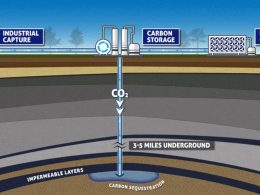DP World has partnered with enterprise sustainability platform Watershed to advance its climate strategy and streamline emissions reporting across its European operations. The logistics giant, which operates in over 75 countries, is responding to growing regulatory pressure and customer demand for transparency by modernising how it tracks and reports environmental impact.
The move comes amid increasing scrutiny from regulatory frameworks such as the EU’s Corporate Sustainability Reporting Directive (CSRD), which requires detailed emissions disclosures and more consistent sustainability data. With disparate systems and varying levels of reporting maturity across its network, DP World selected Watershed to centralise and scale its emissions monitoring, citing the platform’s ease of deployment and reduced reliance on external consultancy.
“Previously, our internal data collection methods lacked the analytical depth and flexibility needed to meet emerging national and regional sustainability standards,” said Nicholas Mazzei, Vice President of Sustainability for Europe at DP World. “Watershed enables us to remain both compliant and cost-efficient while enhancing our understanding of operational impact.”
The collaboration extends beyond compliance, integrating sustainability metrics into broader financial performance indicators. DP World’s European finance and sustainability teams are now working together to embed emissions data into business decision-making processes.
“We must align sustainability and commercial goals,” said John Woollacott, CFO for DP World Europe. “Clients, suppliers, regulators, and even prospective employees increasingly want to understand a company’s environmental position. However, it’s crucial that reporting focuses on a concise set of key performance indicators, avoiding unnecessary complexity.”
Watershed’s platform provides automated data collection and analysis at both country and site levels. This enables DP World to produce accurate emissions data for customers and regulators while supporting internal evaluations of sustainability-related trade-offs—such as comparing the cost and emissions of road versus barge transport options.
The integration is expected to allow for faster, more transparent responses to client sustainability data requests and support ongoing efforts to improve operational efficiency and reduce carbon emissions.





















